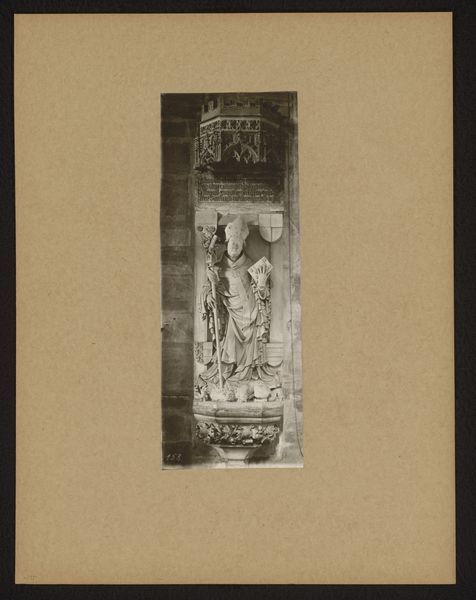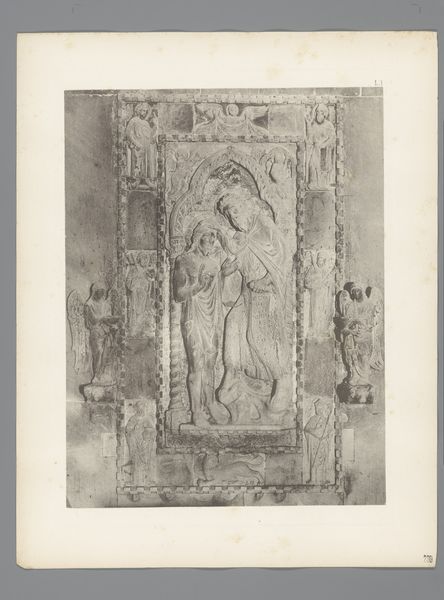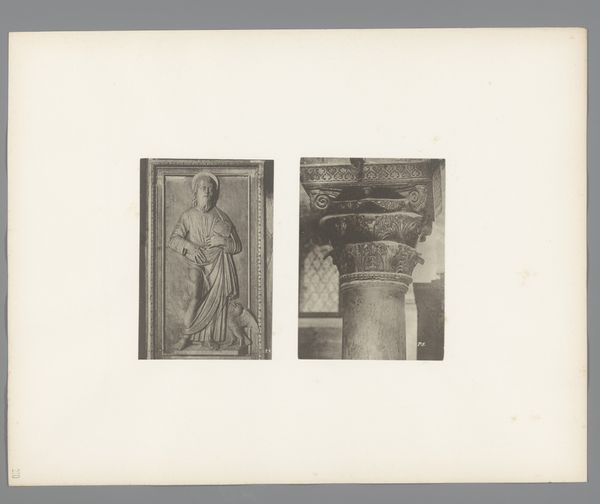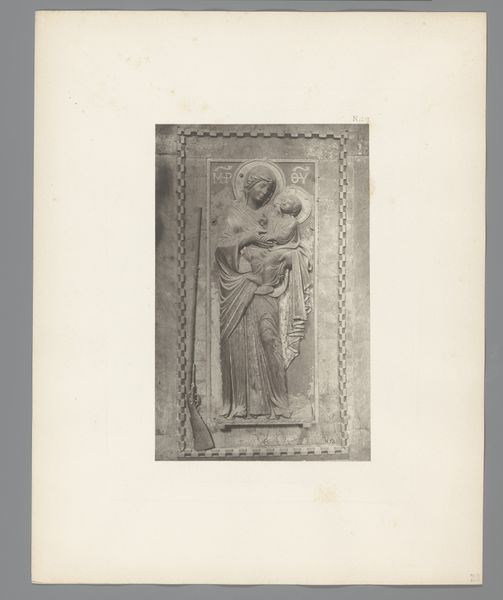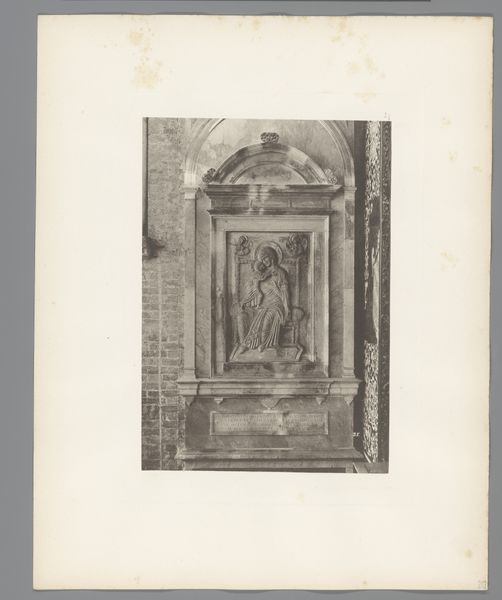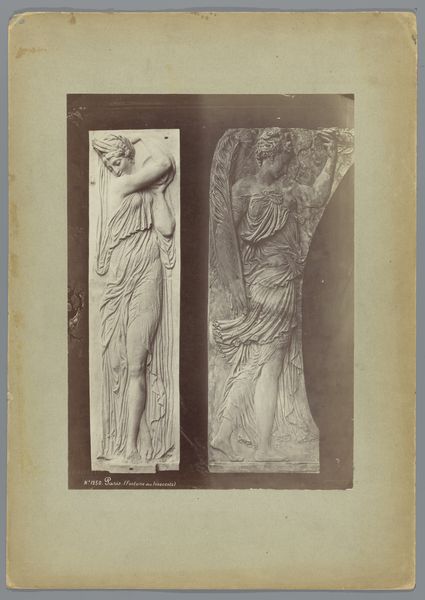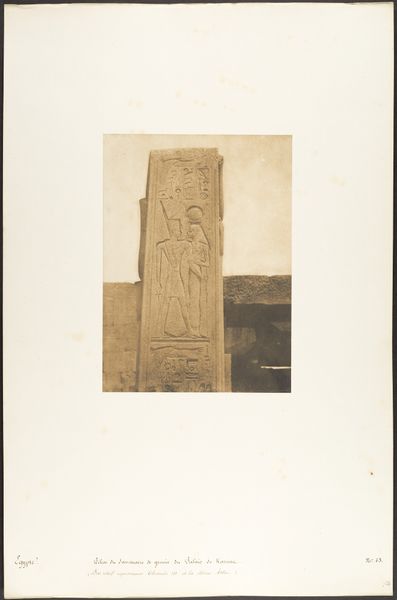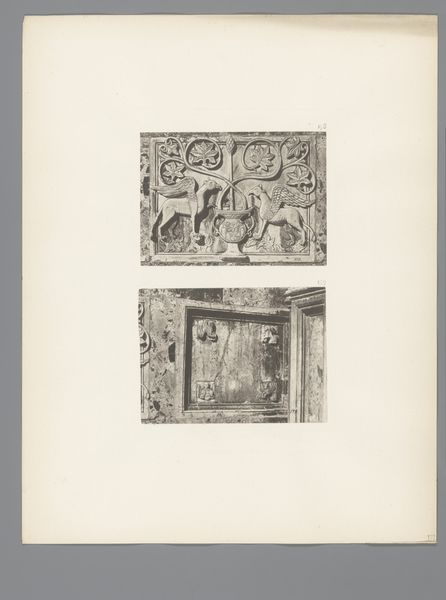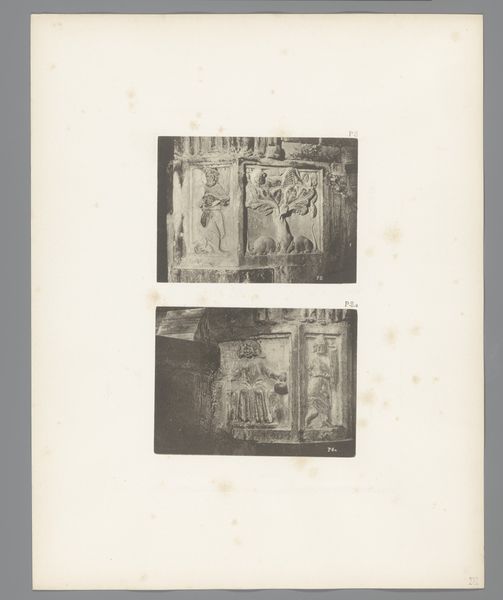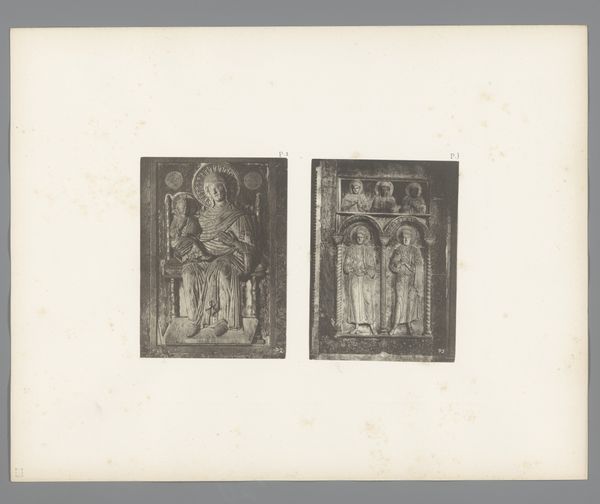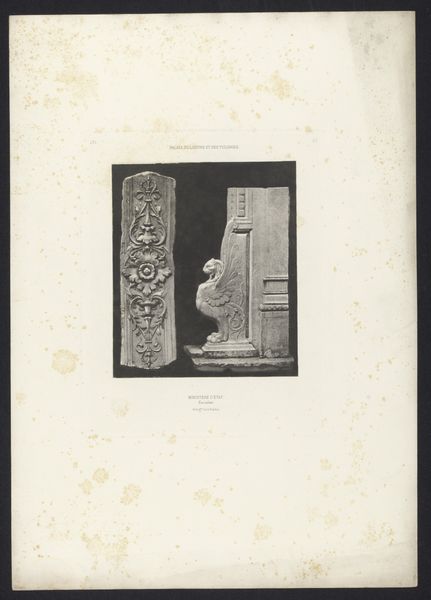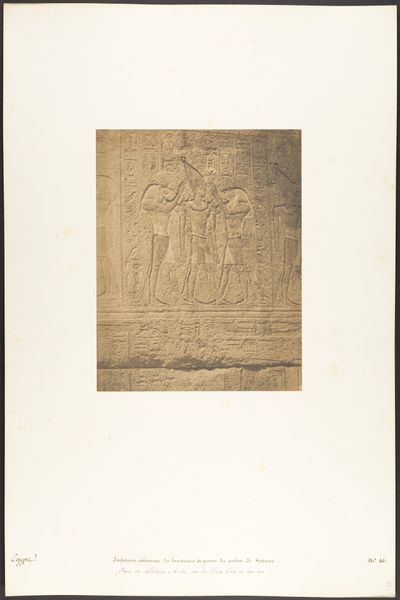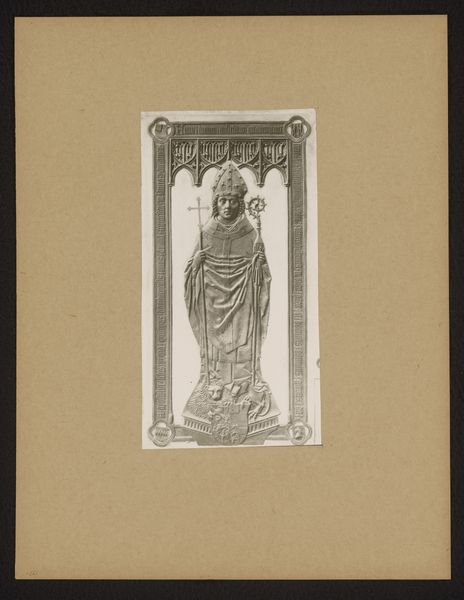
photography, sculpture, gelatin-silver-print
#
portrait
#
medieval
#
photography
#
sculpture
#
gelatin-silver-print
Dimensions: height 314 mm, width 395 mm
Copyright: Rijks Museum: Open Domain
Editor: This is a photograph from before 1885 by Carl Heinrich Jacobi, depicting a tomb of a clergyman in San Marco, Venice, created as a gelatin-silver print. It feels quite somber, but beautifully detailed. What's your take on it? Curator: It is fascinating how the photograph flattens the three-dimensional labor of the stone carving. Look at the contrast between the intricate ornamentation of the tomb surround and the smooth, almost abstracted, rendering of the clergyman’s robes. It makes me think about the labour involved – the different skill sets of the sculptor versus the photographer, both shaped by their respective tools and historical context. Editor: That's a really interesting point! It's almost like two different forms of craftsmanship are in dialogue here. Do you think the choice of gelatin-silver print is significant? Curator: Absolutely. The industrial processes behind creating and printing the gelatin silver contribute to the flattening effect, drawing attention to its mass production as a photograph versus the uniqueness and time involved in the hand carved tomb. How accessible was this image and to whom at the time it was created? Editor: I hadn't considered it like that, that’s quite different to my perspective as a student today looking at an online digital copy. Curator: Precisely! Thinking about material conditions of production pushes us to reconsider our assumptions about accessibility and consumption, of both image and tomb, across time. Editor: Thanks, I'm going to have to consider labour and production in the context of art much more closely. Curator: A keen awareness of materiality reveals so much.
Comments
No comments
Be the first to comment and join the conversation on the ultimate creative platform.
